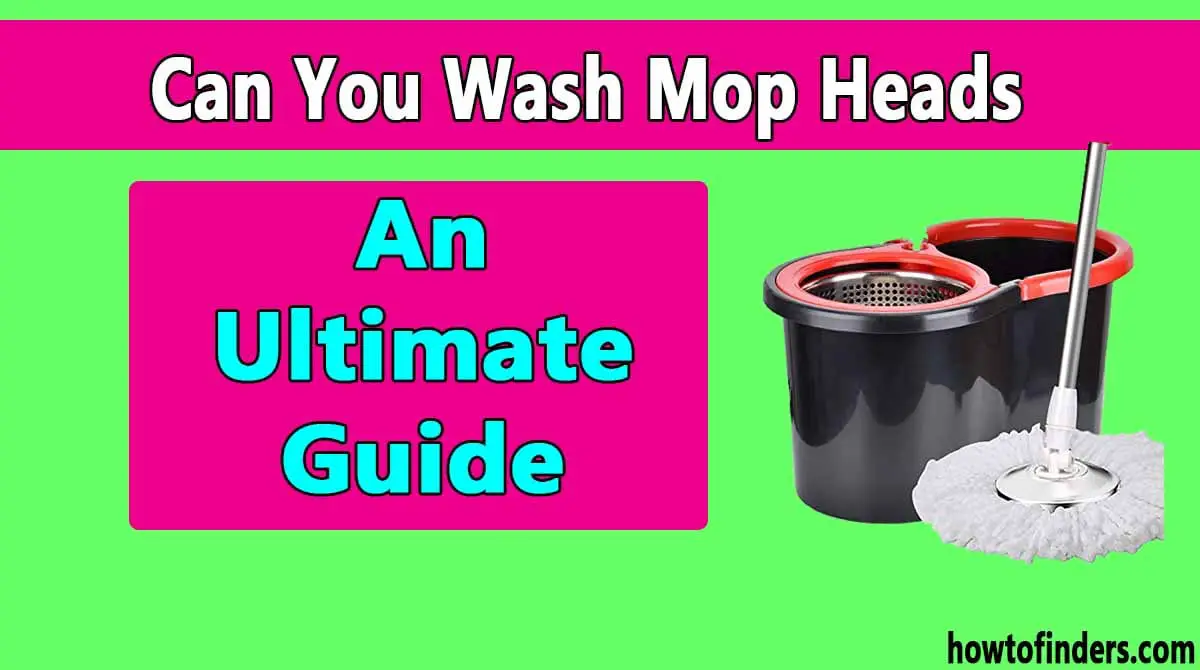Have you ever wondered whether you can wash mop heads, or if you should just throw them away when they get dirty?
Many cleaners have found that mop heads can indeed be washed, but there are some steps you need to take to make sure that the process goes smoothly and that your mop head remains functional.
When I got my mop head dirty, first I thought that I should throw it out. But, a friend guided me that you should wash it. Here’s what you need to know about washing mop heads, and some great tips for doing so correctly.
Don’t wash them with fabric softener
Many people think that, because their mop head is made of microfiber, it can go into a washing machine. In fact, all types of cleaning mops are best washed in cold water by hand or using a delicate cycle in a washing machine.
This will keep them from getting ruined and help them last longer. Even though you may be tempted to use fabric softener on your cleaning mops so they smell nice, avoid doing so at all costs.
Adding a fabric softener will weaken the fibers and make them less effective for picking up dirt and grime.

Do wash in cold water, not hot
Your mop will last longer if you wash it in cold water and air dry it. If you use hot water, your mop head could shrink. As for detergent, any mild, unscented brand will do; bleach is not necessary.
Squeeze as much excess water out of your mop head as possible after each use and hang it to dry (don’t put it in a clothes dryer). Don’t toss it in with your dirty laundry. Microfiber cloths should also be washed separately from other garments so they don’t pick up lint or debris, which could damage them over time.
Do wash with laundry detergent
While it might seem strange to wash your mop with laundry detergent, doing so doesn’t damage its fibers. That said, make sure to choose a low-sudsing detergent.
High-powered cleaning agents can actually weaken your mop by causing shrinkage and fading in fabric dyes. If you don’t have any laundry detergent on hand, consider adding a little vinegar to hot water instead.
Acetic acid is one of many naturally occurring ingredients that can tackle mold and mildew. For best results: Submerge your mop head in warm water with two tablespoons of vinegar.
You can also use five cups of laundry detergent for five minutes. Gently squeeze out excess water and hang to dry before using again.
Do dry in the sun
The UV rays in sunlight kill a lot of germs, so when it’s sunny (and not humid), leave your rags or mops outside for about an hour. This works especially well for thick, fluffy rags because they tend to dry much faster than thinner ones.
For example, a bath towel typically dries in half an hour to an hour if you’re using these four steps: hang it on a clothesline; put hangers at either end so it doesn’t stretch or fall off; put clips underneath to keep it from blowing away, and leave it out in the full sun until mostly dry (this usually takes 1-2 hours). The same trick works with sweaters and blankets.
Do use rubber gloves
Anytime you’re working with bleach, wear rubber gloves to protect your hands. If you get bleach on your skin, you can develop a chemical burn that may take days to heal and even longer to fade.
It’s also a good idea to wear long sleeves and pants if possible. Bleach stains can be hard to get out of clothing.
Don’t leave them in a storage closet
Storing your mop in a dark closet isn’t ideal, especially if you’re leaving it in standing water. Mold, mildew, and bacteria can grow on old mops when they’re stored wet or in darkness.
Old rags that get splashed with chemicals could be contaminated as well. If you must store a dirty mop, try hanging it to dry before putting it away. It’s also a good idea to use an antibacterial spray on both sides of your mop pads at least once a week.
Mold is dangerous stuff! Keep clean items out of storage by giving them a space within easy reach so they can get regular cleaning attention. Do it every day if possible. Make sure that you never let any cleaning products or supplies sit around without being used for long periods of time.
Also go through: Remove Cedar Spin Mop Head Fixed
Conclusion
It is best to wash mop heads when they are dirty or smell bad. However, it is also important that you never leave your mop head in water for more than 24 hours.
If you do this, you can cause mildew and mold to form. I hope that you have found my answer helpful and if so, please consider leaving a comment below!